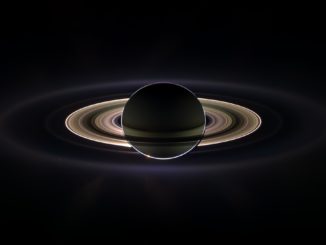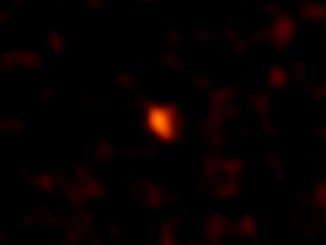
NASA’s Juno spacecraft sailed over Jupiter’s cloud tops early Monday, the fourth time the solar-powered probe has approached the giant planet and collected science data since its arrival last July 4.
The flyby was the first performed by Juno since NASA managers decided to keep the craft in its current orbit, scrapping plans to ratchet down into a tighter orbit that would take it by Jupiter once every two weeks.
On its current trajectory, Juno arcs out to a distance several million miles from Jupiter and returns for a high-speed encounter once every 53-and-a-half days.
NASA reported the spacecraft, built and operated by Lockheed Martin, performed Monday’s flyby as expected to complete its fourth science orbit, passing about 2,700 miles (4,400 kilometres) over Jupiter’s cloud tops at a relative velocity of about 129,000 mph (57.8 kilometres per second). The point of closest approach occurred at 4:52 a.m. EDT (0852 GMT) Monday.
“Every time we get near Jupiter’s cloud tops, we learn new insights that help us understand this amazing giant planet,” said Scott Bolton, principal investigator of Juno from the Southwest Research Institute in San Antonio.
NASA said all of Juno’s science instruments and its JunoCam imager were operating during Monday’s flyby, which was the fourth time the probe has passed near Jupiter with its sensors switched on.
Juno has passed inside Jupiter’s radiation belts six times, including the spacecraft’s arrival manoeuvre July 4, when the probe fired its main engine to enter orbit. Its instruments were deactivated during that encounter to focus on the make-or-break engine burn. The spacecraft entered safe mode just before a flyby in October, and it gathered no science data during that approach.
The Juno mission is designed to study Jupiter’s intense magnetic field and investigate the gas giant’s deep interior structure, revealing insights about its atmosphere and probing for a rocky core.
The results from Juno so far point toward Jupiter’s magnetic field being more complicated than originally thought, according to NASA. The planet’s distinctive colorful belts and zones extend deep inside the atmosphere, and Juno’s data haul suggests Jupiter’s powerful aurorae might be linked to volcanoes on the moon Io, scientists said.
NASA officials decided last month to keep Juno in its current orbit around Jupiter, opting against risking another main engine burn to tighten its loop around the planet after engineers detected problems with check valves inside the propellant pressurization system in October.
The decision avoids using the suspect propulsion system and keeps Juno out of Jupiter’s shadow through 2019, when the spacecraft’s power-generating solar panels might otherwise have been robbed of sunlight. It also slows Juno’s exposure to harmful radiation, a known threat engineers have identified as most likely to eventually end the mission.
The longer orbit period means science data will trickle down to Earth once every 53 days, when Juno is positioned to make its most revealing observations. Scientists planned to have Juno complete 32 of the 14-day science orbits through February 2018, when its prime mission is scheduled to be over and ground controllers planned to intentionally crash the spacecraft into Jupiter’s atmosphere, avoiding the possibility of contaminating one of Jupiter’s potentially habitable moons.
Juno will now accomplish around 11 science orbits by the end of February 2018, enough for it to complete its “minimum science” requirements, according to Jim Green, head of NASA’s planetary science division.
Then NASA will consider extending Juno’s mission another three years.
Green said March 20 that the decision to maintain Juno’s 53-day orbit, while lengthening the time required to get all of the mission’s planned science data, “brings in a richer set of science.”
Mission officials said each close approach, or perijove passage, every 53 days will produce the same data as planned during Juno’s 14-day orbit campaign.
Speaking at the Lunar and Planetary Science Conference near Houston, Green said Juno’s higher orbit will allow it to move through Jupiter’s magnetotail, the part of the magnetic field bubble around the planet that is blown back like a comet’s tail by the solar wind.
Such a perspective will allow Juno’s science team to study the complex network of magnetic field lines around Jupiter, and help sort out the drivers behind Jupiter’s auroras, separating auroras induced by internal convection and the solar wind.
He said NASA will invite outside scientists specializing in heliophysics to join the Juno science team and “complement the mission.”
“I think that’s going to be a huge step,” Green said.
Email the author.
Follow Stephen Clark on Twitter: @StephenClark1.



